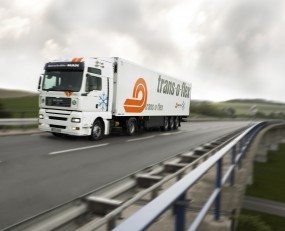
Trans-o-flex has started construction for its new logistics centre in Driedorf, Hessen; the €13m investment in the new sorting centre is intended to increase the efficiency of the Trans-o-flex Express and Trans-o-flex ThermoMed networks. Commissioning in Driedorf is scheduled for spring 2021. Trans-o-flex CEO Wolfgang P. Albeck said, “The new location will further increase the performance of our Trans-o-flex Express and ThermoMed networks and create synergies between the two networks.”
The transshipment centre will be built on a 41,649 sq m property, in which parcels and pallets will be handled in two different temperature zones. Albeck commented, “To ensure that the effectiveness of drugs is not impacted by too high or too low temperatures on the transport route, Trans-o-flex will be able to monitor and control the temperature in the entire logistics chain in its two temperature zones 2 to 8 and 15 to 25 degrees Celsius and document it.”
Previously separate locations for the transport of refrigerated pharmaceuticals (2 to 8 degrees Celsius) in the Trans-o-flex ThermoMed network and drugs in the room temperature range (15 to 25 degrees Celsius) in the Trans-o-flex Express network are planned to be combined at the new location. For this purpose, separate cooling cells are installed in the hall, where shipments are sorted and handled those two different temperature environments.
The new location will have around 5,000 sq m of hall space, with a total of 81 loading and unloading gates. The centre will be Y-shaped, which is intended to minimise required space and optimise processing.
Albeck said, “With the same transhipment area, we can install more loading and unloading gates in the Y-construction compared to the classic square. We are also shortening the sorting routes in the hall, which saves time in day-to-day operations. “
Source: Logistik Heute